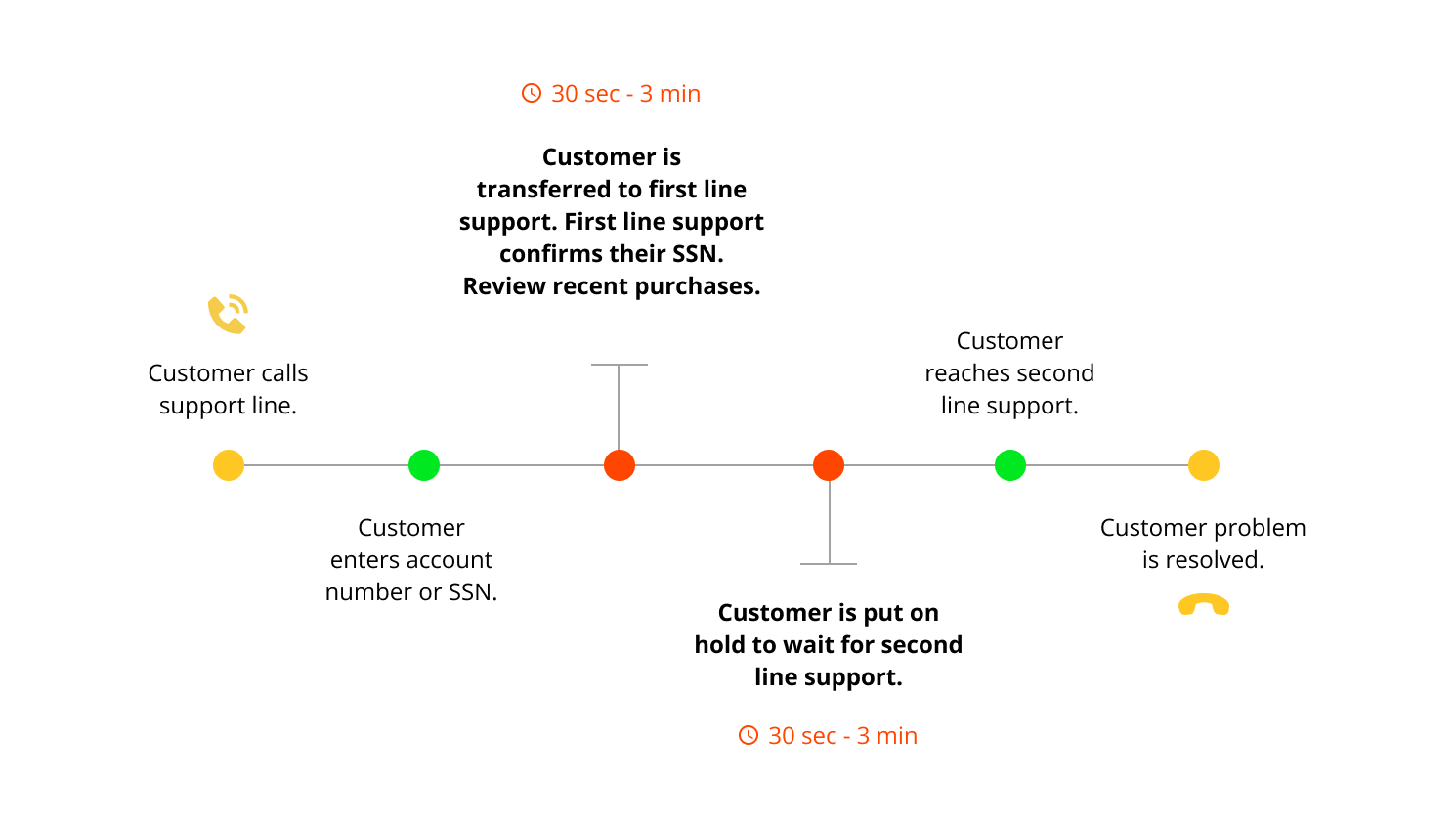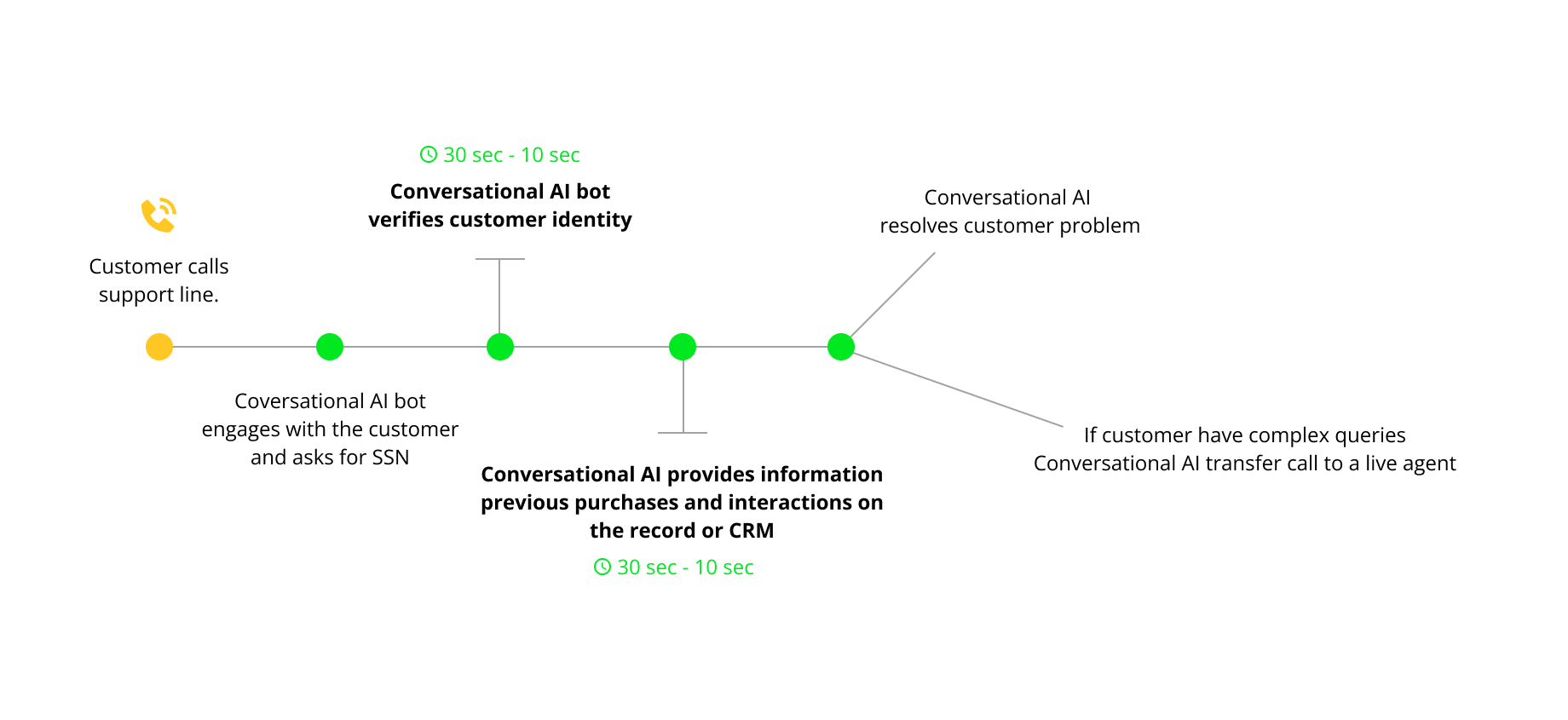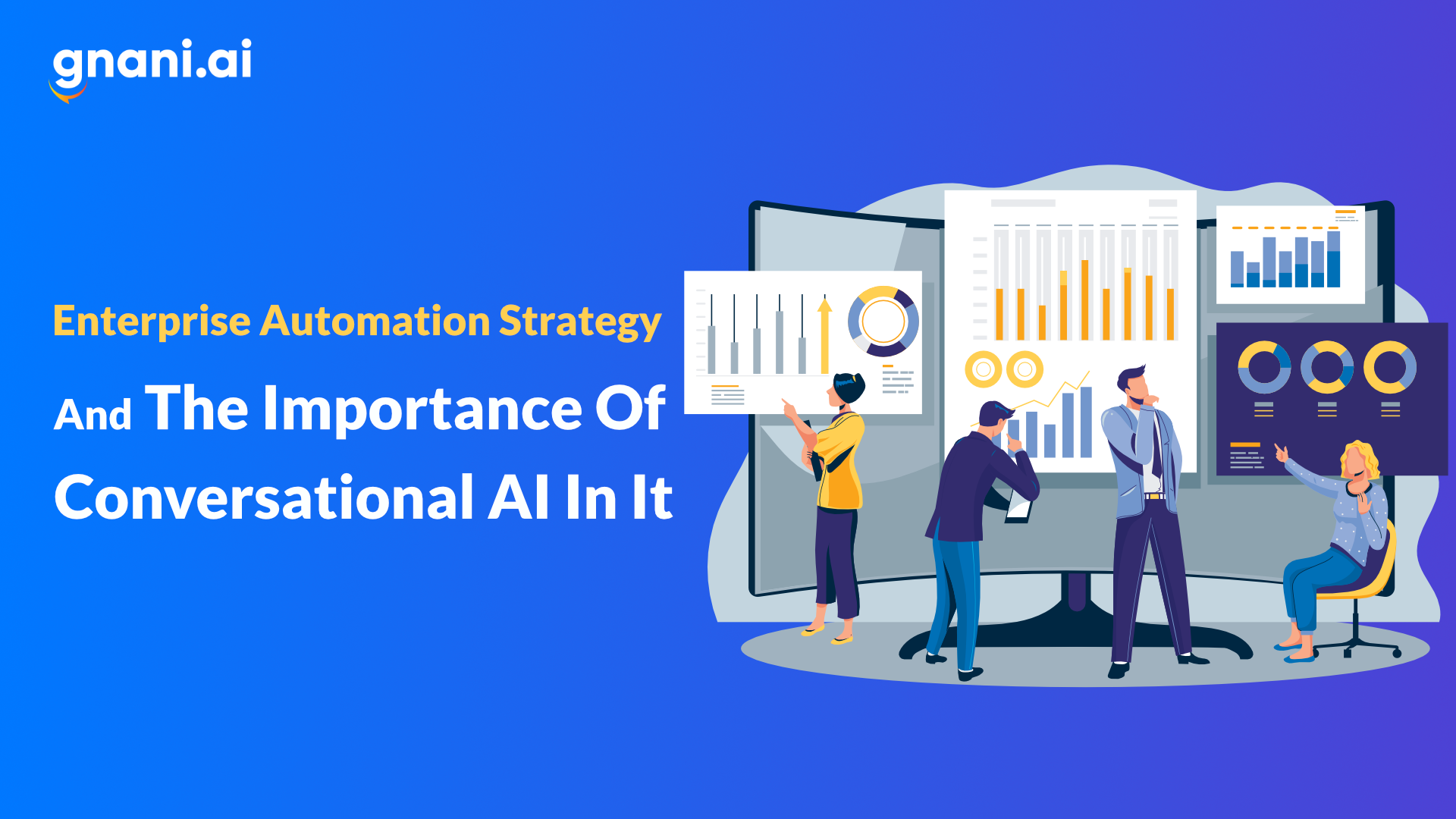The need for an intelligent automation strategy as well as its adoption rate varies between enterprises and even inside teams within each enterprise based on their individual priorities. On a very high level, knowing where process pain points allow the focus on peripheral processes and understanding where deliberate change can be made. But, as we know, it’s neither easy nor simple to reach this point.
Enterprise automation is, in reality, more than straightforward automation. It can be a tool to gauge hype versus reality. In today’s connected world, personalized experiences are the expected outcome of advancing technologies for consumers, particularly among millennials. They are demanding experiences that deliver superior customized experiences based on their personal needs and tastes for a better quality of life.
Conversational AI technology for enterprise incorporates natural language processing, machine learning and other related algorithms with chatbots and voice assistants to engage users in human-like conversations. They are more efficient at analytics. They can spot patterns, make recommendations over time and get insights from a large corpus of user input.
Limitations in Digitization & Automation Because of Human Intervention
Even though automation makes a job simple, human intervention may tend to break the automation chain. For example, In an email campaign that has to be sent to 100 different contact lists, if a user forgot to add a contact list, that particular audience won’t receive the campaign.
On the other hand, if the automation system is capable of suggesting lists based on the previous campaigns, an enterprise can harness the full potential of the automation system. This is where recommendation engines and AI come into play. With less human intervention and when human intelligence is used to only supervise/administer the automation engines, the results will be stupendous.
The pace of technology development will continue to move ahead but some things remain fundamental i.e. the need for a human to human interaction. For example, patients will always want to interact with a doctor no matter the machines that are available for assisting in diagnosis. Automation can perform routine tasks more efficiently than a human, this is where conversational AI enables chatbot to exhibit knowledge while simultaneously conversing in the most ‘human-like’ way possible. Although technology has given rise to much debate on its potential to replace humans, we now see that just because it can replace certain tasks, we may not want it absolutely.
Conversational AI Strategy and Enterprise Automation
How to select, build & scale your enterprise automation strategy and roadmap begins by clearly understanding your business needs. With too many automation tools available, it is very easy to be confused. But not every tool is made for you. The very first step is to identify which area(s) you want to be automated. These could be area(s) heavily run by monotonous tasks that your workforce spends significant time on.
Small enterprises operate in far more restricted environments than large enterprises. In such cases, an intelligent digital automation strategy can empower them to scale output. These tools support analytics and can enable small enterprises with data and track their ROI, something that is a more immediate need for small businesses than their larger counterparts. A smart business strategy for start-ups would be to augment their human resources with automation like in the following areas:
- Customer Support – The core purpose of automation support in customer service should be to make it easy for customers to ask for help and respond to these requests in the fastest possible time. The most obvious touchpoint here is a Conversational AI tool that handles repetitive and routine customer queries, 24×7 and without compromising the quality of the conversations. The better, faster, and more personalized these conversations, the higher is the chance of gaining customer delight.
-
Email Marketing – Automating responses for repetitive emails, filtering irrelevant emails, organizing emails in specific folders can enable employees to prioritize their work and increase daily productivity.
-
Accounting – This is a no-brainer. Hundreds of hours are lost in manual accounting processes. Automating some or all of the steps helps enterprises free up valuable time, reduce the margin of error and use the time saved on other priority tasks.
Enterprises that have made some inroads into automation and are looking to scale their digital automation strategy need to analyze their results using analytics, and go deeper into their business needs because they might already be using scores of tools. Using ‘equally powerful’ tools to scale existing ROI or include new teams to take leverage from automation requires further depth in planning. For example:
Automation in product development processes can enable flexible, easy-to-configure workflow capabilities that allow enterprises to automate, track, and manage a project as it moves through the idea-to-launch process.
Reshape your upsell, cross-sell and lead generation strategies with AI-powered chatbots to improve your customer conversion rates. Amplify your sales, enhance brand loyalty and get actionable business insights with AI driven data, reduce your customer service costs, build customer loyalty with conversational AI that can understand customer intent, quickly generate information, on any channel, and never goes on vacation.
Enterprise Automation Strategy with AI Chatbots
Natural language processing (NLP) and automatic semantic understanding (ASU) have paved the way for a transition from chatbots to Conversational AI bots. Today, the latter can give you insights on a user’s intention easily and respond better. Keeping up with today’s overall digital technology smart quotient is an obvious and core need for Conversational AI tools and that’s one reason why they are moving towards empathy. For example, these tools can take a call on when to hand over a conversation to a human. They are gradually moving towards contextual and personalized conversations through continuous analysis and improvisation. This technology can also recall and translate a huge amount of information from past conversations using analytics in human-like fashion and also understand what the customers are asking. These capabilities yield insights that enterprises can use to personalize everything to individual preferences, from products and services to offers and experiences.
The potential of digital or virtual assistants and Conversational AI bots for enterprises are being discovered every day. The increasing adoption of work from home has opened up new opportunities for AI bots. These provide secured access to data because of their integrability with systems such as ERP, CRM, etc. This means employees can safely do work such as expense requests, budget management, handling appointments, etc. at home. There are the possibilities of a machine to machine communications through chatbots, multi-language NLP, Conversational AI bots with a personality to make dialogues more engaging, augmented reality, and even acting as a trusted friend who identifies & protects when users share confidential or protected information.
An intelligent enterprise automation strategy is quite inevitable considering the changing business dynamics. With more and more innovation-centric investments, smartly planned and well-calculated automation will continue to play a significant role for futuristic enterprises.
Conversational AI in Process Management & Strategy
Conversational AI for enterprise can deal better with processes, information and data to give insight on their market platform’s demands. Today, markets have become very volatile and success depends on how fast companies can adapt and improvise. Wasting time on tasks that can be automated can prove lethal. Almost every area in business (Hiring, Finance, Operations, Sales, Customer Experience) leverages automation in some way or the other. According to PWC, 54% of business executives find that productivity has increased after implementing AI automation.
The critical starting point while adopting automation, is to first understand the business capabilities, core processes, and what customers need. By identifying areas that need to be automated, their baseline performance, and key measures of success, an enterprise can create ownership of the process and improve them with progress.
For example, a bank where many employees spend a significant amount of their time answering, gathering, and processing repetitive data. Imagine this – a customer calls the support line. She enters her account number or a Social Security Number (SSN). She is then transferred to first-line support where her SSC is confirmed, and recent purchases are reviewed. Next, she is put on hold for second-line support and once support is available, she is connected to an executive who solves her problem. All of this takes anywhere from 30 seconds to 3 minutes.

Now, with a Conversational AI tool in place, the same scenario can reduce the overall call time to 3-10 seconds. Because, it handles the SSN verification, the first line support. It also reduces verification time and wait time significantly. Most importantly, it delivers a satisfying customer experience.

These are some other benefits of using a conversational AI for enterprise:
Handling repetitive queries round the clock as well as call requests during out-of-office hours
- Prioritizing ‘special’ customers
- Generating leads by acting upon positive intent
- Suggesting products and services based on customers’ requirements
- Handing calls to a human at the right time during a conversation
Conversational AI tools can not only improve conversations but also improve business processes by helping enterprises to go deeper and review the progress of services provided. It addresses questions, such as what kind of experience to provide to customers, employees, and partners, and how to align conversational AI with enterprise goals, which will help to identify the right purpose. These tools have greater insights to optimize business outcomes. It is important to remember that regardless of which business stage an enterprise is in, they must select a tool that is usable by non-coders. If a tool needs extra time and effort, then it’s diverting from its core purpose.
It is very easy to get trapped in analysis paralysis because of the sheer amount of data overload. Remember what we said right at the beginning of this post – start with understanding your needs and how much automation you need to eliminate routine, boring (but important), and time-consuming tasks. This will help you set the right expectations, get maximum value and insights from your automation tools.
Frequently Asked Questions
What can conversational AI be used for?
Conversational AI can be used for a variety of purposes, including customer service and sales, marketing and advertising, operations and logistics management, gathering data and many other applications.
Is conversational AI a chatbot?
Conversational AI is not a chatbot. A chatbot is a computer program that attempts to simulate human conversation for the purpose of solving problems and answering questions. Conversational AI can be implemented to make chatbots more sophisticated and effective at understanding and responding to human language.
What is conversational automation?
Conversational Automation is about using software to automate the mundane aspects of a customer service process so that agents can focus on delivering better, more personalized service experiences.


